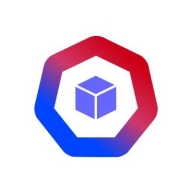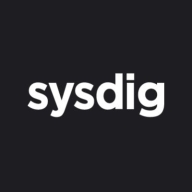


Find out what your peers are saying about Wiz, Palo Alto Networks, SentinelOne and others in Cloud-Native Application Protection Platforms (CNAPP).
| Product | Market Share (%) |
|---|---|
| SentinelOne Singularity Cloud Security | 4.6% |
| Sysdig Secure | 3.1% |
| AccuKnox Platform | 0.5% |
| Other | 91.8% |



| Company Size | Count |
|---|---|
| Small Business | 44 |
| Midsize Enterprise | 21 |
| Large Enterprise | 53 |
| Company Size | Count |
|---|---|
| Small Business | 5 |
| Midsize Enterprise | 2 |
| Large Enterprise | 3 |
SentinelOne Singularity Cloud Security offers a streamlined approach to cloud security with intuitive operation and strong integration capabilities for heightened threat detection and remediation efficiency.
Singularity Cloud Security stands out for its real-time detection and response, effectively minimizing detection and remediation timelines. Its automated remediation integrates smoothly with third-party tools enhancing operational efficiency. The comprehensive console ensures visibility and support for forensic investigations. Seamless platform integration and robust support for innovation are notable advantages. Areas for development include improved search functionality, affordability, better firewall capabilities for remote users, stable agents, comprehensive reporting, and efficient third-party integrations. Clarity in the interface, responsive support, and real-time alerting need enhancement, with a call for more automation and customization. Better scalability and cost-effective integration without compromising capabilities are desired.
What are SentinelOne Singularity Cloud Security's standout features?SentinelOne Singularity Cloud Security is deployed in industries needing robust cloud security posture management, endpoint protection, and threat hunting. Utilized frequently across AWS and Azure, it assists in monitoring, threat detection, and maintaining compliance in diverse environments while providing real-time alerts and recommendations for proactive threat management.
AccuKnox Platform enhances application security and compliance by focusing on container security, network activity monitoring, and security policy enforcement. Its seamless Kubernetes integration and real-time alerts are highly valued.
AccuKnox Platform offers robust performance in threat detection and simplifies policy management, aiding users in reducing vulnerabilities and securing workloads efficiently. Its seamless deployment and compatibility with cloud environments, combined with comprehensive monitoring and reporting tools, contribute to enhanced operational efficiency. Users also appreciate the platform's real-time threat detection and easy deployment.
What are the key features of AccuKnox Platform?AccuKnox Platform is implemented across industries such as finance, healthcare, and technology, where high levels of security and compliance are essential. Organizations leverage its robust features to protect sensitive data, ensure regulatory compliance, and maintain operational efficiency even during peak times.
In the cloud, every second counts. Attacks move at warp speed, and security teams must protect the business without slowing it down. Sysdig stops cloud attacks in real time, instantly detecting changes in risk with runtime insights, a unique AI architecture, and open source Falco. Sysdig delivers live visibility by correlating signals across cloud workloads, identities, and services to uncover hidden attack paths. By knowing what is running, teams can prioritize the vulnerabilities, misconfigurations, permissions, and threats that matter most. From prevention to defense, Sysdig helps enterprises move faster and focus on what matters: innovation.
Sysdig. Secure Every Second.
We monitor all Cloud-Native Application Protection Platforms (CNAPP) reviews to prevent fraudulent reviews and keep review quality high. We do not post reviews by company employees or direct competitors. We validate each review for authenticity via cross-reference with LinkedIn, and personal follow-up with the reviewer when necessary.